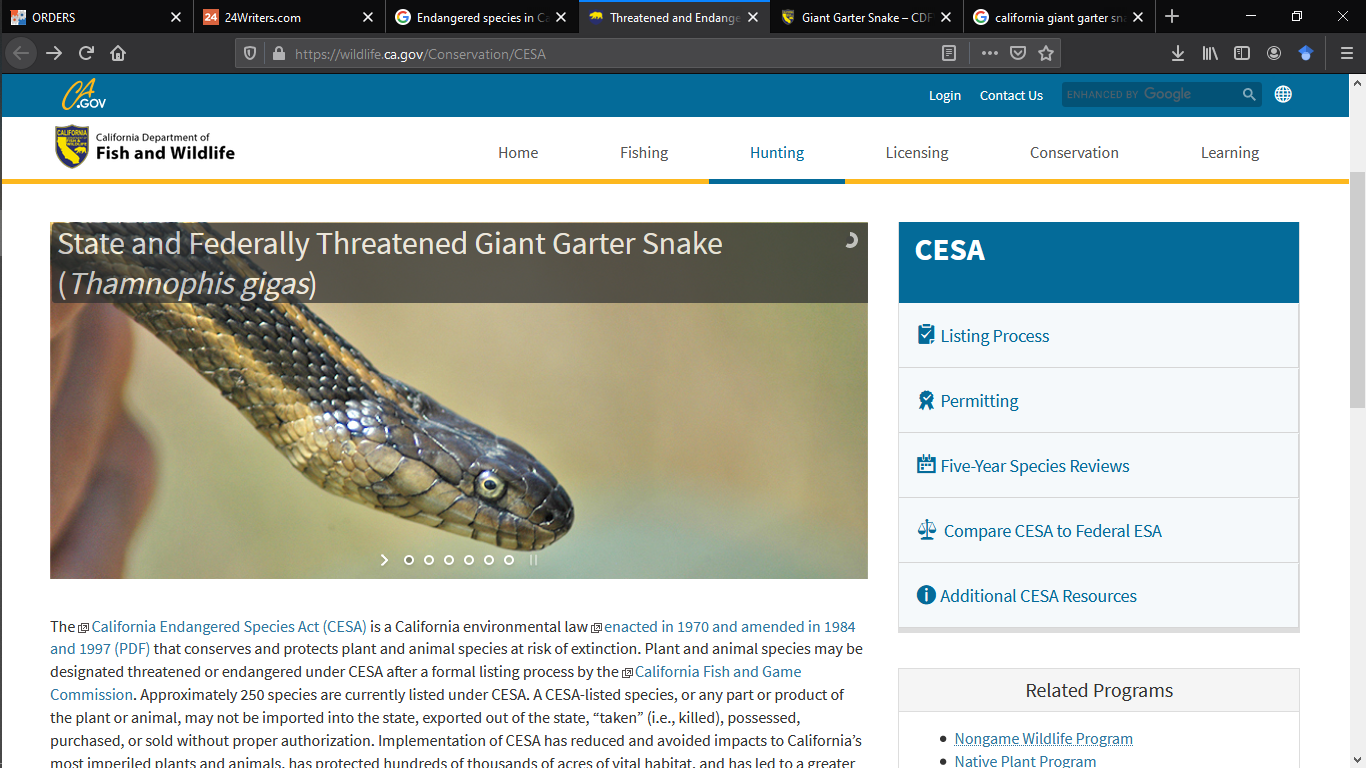The giant garter snake (Thamnophis gigas) is one of the endangered animals in California. There are several reasons for their decline, making them an endangered species. According to the California Department of Fish and Wildlife (CDFW, n.d.), adult bullfrogs and northern water snakes predate their young ones on and if this happens at a higher rate, it becomes difficult to recover their population. The snakes also feed on fish with high mercury levels, hence they become poisoned. Moreover, there has been the destruction of the wetlands, their natural habitats, making it difficult for them to colonize new habitats.

In a dependent relationship, an organism depends on another as a source of nutrients vital for its survival. Humans are the most dependent organisms since they cannot synthesize their own food. They mainly depend on plants to utilize sunlight and soil to make food. In the above table, humans rely on bees to facilitate pollination among food crops and use their honey as food. The least dependent organism is the lichen; it produces acids, which break down rocks to form nutrient-rich soils. Interdependency relationship entails organisms, which mutually benefit from each other. For instance, persimmon trees and blueberry bush depend on bees for pollination, while the latter obtain food in the form of nectar. Moreover, in the symbiotic relationship between yeast, fungi, algae, and lichens, the algae synthesize energy, while the fungi provide it with moisture minerals. Concurrently, lichens break down rocks to provide nutrient-rich soil in the relationship.
Reference
California Department of Fish and Wildlife. (n.d.). Threatened and endangered species.